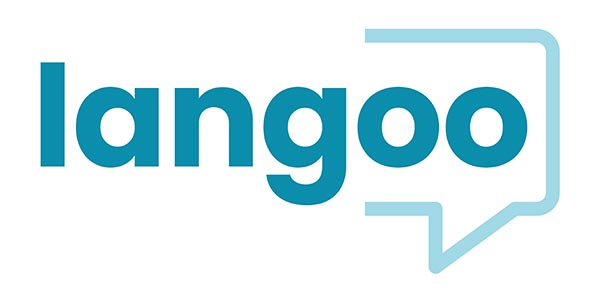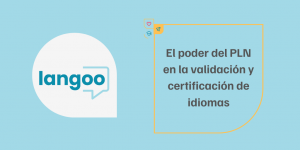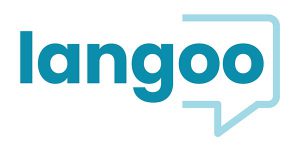How technology changed language learning
Teresa
- 31/03/2022
Imagine telling someone that you are anxious or sympathetic through your actions alone, without using any words. Now, try describing the color of the sky or just the weather with actions. Doesn’t it sound difficult? We have underestimated the importance of language and the key role it plays in our lives for a long time.
Although nonverbal communication is equally important, verbal communication has made our lives easier and more comfortable. We can communicate with loved ones who live thousands of miles away through words in the form of letters, phone calls, texts and voice messages.
It is the advent of technology that has made this possible, changing also the way we learn languages. For this reason, we will explain you below how technology changed language learning. Keep reading!
Tabla de contenidos
Languages and facts
Languages have helped humans form stronger bonds with those around them. With over 7000 languages spoken every day around the world, it has aided people in a variety of ways: from learning and studying new concepts to expressing feelings and articulating their opinions. Moreover, several studies have shown that honing a child’s language skills has a greater impact on their overall academic performance and social development.
Likewise, we all love to travel and explore different cultures but we tend to forget that language and culture go hand in hand. For this reason, to bond with the people of a specific culture, it is very important to speak their language. For instance, the word “Grand” means “magnificent in appearance or size” all over the world, it simply means “fine” or “alright” in Ireland.
People are very personally attached to their native languages. For example, if you are in a different country and find someone who speaks the same language as you, there is an instant connection with that person. Similarly, in a recent study around 72% of global consumers said that they were more likely to buy a product that had information in their native language.
The language translation market is estimated to be worth 39.37 billion USD in 2020 and will grow to 46.22 billion USD over the next decade.

Language learning before technology
Before the invention of mobile applications and youtube video tutorials, did you ever wonder how people learned languages?
A large percentage of people relied on learning foreign languages through books. Before the 19th Century, learning a new language or speaking multiple languages was considered a noble art. Besides, people traveled to different countries and lived there for weeks to learn a language, but most people also relied heavily on books.
Until a certain point where people realized that communication was a key to language learning, how can one recognize the sounds and respond to the spoken words of a language they have never heard before by just learning from a book? That was when Language Labs were introduced. Language Labs are spaces with audio and visual materials that help the students listen and learn the language better than they could with the books.
Afterward, several language schools came across the world. Language schools operated with a strict school-like curriculum, they required a teacher, a whiteboard, exercises, homework and exams as a necessary part of these schools. These schools were dependent on a teacher to come into the classroom every day for the students to progress. Also, they were mainly started with an intention to certify the student’s language skill level rather than to help them learn a language as a hobby.
There are several benefits of learning a language from a teacher, a few have been listed below:
- Improved verbal abilities
- Customized exercises depending on the student’s ability level
- Immediate query resolution
- Sharing personal anecdotes and experiences to help students remember better
As amazing as it sounds, it is equally expensive and time-consuming as well. It would cost a student approximately 2000 Euros to learn a language from a traditional language school.
Language learning today
Technology has played a major role in the evolution of language learning. As the human dependency on technology increased, the number of applications and software to help people in their daily lives has also escalated.
Learning a new language requires a person to work on their listening, reading, writing and speaking abilities, as well as the introduction of artificial intelligence has helped these applications provide curated learning experiences for the users based on their interactions and progress within the app.
These advances in technology have completely eliminated the dependency on a teacher for learning a language. Besides, most schools have also stated that they are planning to provide languages as an optional in their school curriculum due to the lack of availability of professional language teachers.

How can Langoo make a difference?
Langoo is an online language learning platform combined with Artificial Intelligence that allows its users to practice for their exams through a variety of sample tests at their convenience.
Langoo also provides over 100 sample tests as well as individualized feedback from certified teachers and native speakers. Apart from this, Langoo also provides the registered students with learning tips, mock tests, and pocket notes that can help them qualify for the exam in their first attempt.
There’s a mammoth change in how languages were taught years ago and how it is done now. With increasing adoption of technologies like machine learning and artificial intelligence, more and more companies are trying to incorporate them into their products to deliver a personalized experience to the user.
Language learning, too, has seen the transformation from books to language labs, schools and now online platforms. The pandemic accelerated trends like working from home and remote learning, and these are here to stay. That’s why Langoo fits in perfectly with this whole idea by providing an all inclusive language learning platform that is accessible from anywhere in the world.





One Response
Using technology in language education is a great way to get students involved in the learning process. Thanks for sharing!
Comments are closed.